From the rich aroma that fills your kitchen in the morning to the comforting warmth of that first sip, coffee is more than just a beverage–it’s an experience. But behind every perfect cup lies a fascinating world of coffee beans, each with its own story to tell. This journey begins with understanding the bean itself, the foundation of your coffee ritual. Join us as we explore the intricacies of coffee beans, from their origins and processing methods to the art of brewing and beyond.
- Arabica vs. Robusta: The Two Titans of the Coffee World
- From Cherry to Bean: Exploring Coffee Processing Methods
- Roasting: Unveiling the Bean’s Hidden Potential
- Grinding and Brewing: The Final Steps to Coffee Perfection
- Storing Your Beans: Preserving Freshness and Flavor
- Beyond the Bean: Exploring the Wider World of Coffee
- Conclusion: Embark on Your Coffee Adventure
Arabica vs. Robusta: The Two Titans of the Coffee World

The vast majority of coffee consumed worldwide comes from two main species: Arabica and Robusta. While both produce coffee beans, they offer distinct characteristics that cater to different palates. Arabica, known for its sweeter, more complex flavor profile, boasts a higher acidity and a lower caffeine content (1.2-1.5%). Think of bright citrus notes, hints of chocolate, or the delicate sweetness of caramel. This complexity makes Arabica a favorite for specialty coffee lovers.
“Arabica offers elegance and complexity, while Robusta delivers boldness and power–each a titan in its own right, catering to distinct coffee cravings.”
– Dr. Elena Martinez, Coffee Scientist and Flavor Specialist
Robusta, on the other hand, delivers a bolder, more bitter flavor with a significantly higher caffeine content (2.2-2.7%). Its robust nature lends itself well to espresso blends, contributing to the coveted crema – that rich, reddish-brown foam that sits atop a well-pulled shot. While often perceived as less nuanced than Arabica, high-quality Robusta beans can offer intriguing chocolate and nutty notes.
Choosing between Arabica and Robusta ultimately comes down to personal preference. If you appreciate a smoother, more aromatic cup with a moderate caffeine kick, Arabica is likely your go-to. For those seeking a powerful caffeine boost and a more intense, bitter flavor, Robusta might be the perfect choice.
Arabica Bean Trigone Morphology
Arabica coffee beans, *Coffea arabica*, exhibit a distinct trigonal morphology, characterized by their characteristically flattish, almost triangular shape. This morphological feature is directly related to the bean’s development within the coffee cherry and plays a significant role in its cup quality. The flattened shape results from the development of the bean within the fruit, influencing the internal cell structure and impacting the final roasted bean’s density and porosity. Beans with a more pronounced trigonal shape generally display a more even roast profile and, consequently, a more balanced cup profile due to more uniform heat distribution during roasting. Variations in trigonal expression, ranging from pronounced to less defined, can be attributed to genetic factors, environmental conditions such as altitude and rainfall, and agricultural practices such as fertilization and processing methods.
- The degree of trigonality affects bean density; more triangular beans are denser.
- Uneven trigonality can lead to uneven roasting and potential defects like scorching or underdevelopment.
- Robusta beans, in contrast, typically exhibit a more rounded morphology.
- Bean shape influences water absorption during brewing, impacting extraction and flavor.
- Specific cultivars of Arabica exhibit variations in their typical trigonal expression.
- Post-harvest processing methods can subtly influence the final bean shape.
| Key Aspect | Flavor Profile | Caffeine Content | Bean Shape |
|---|---|---|---|
| Arabica | Sweeter, complex, bright citrus, chocolate, caramel | 1.2-1.5% | Flattish, triangular (trigonal) |
| Robusta | Bolder, bitter, chocolate, nutty notes | 2.2-2.7% | Rounded |
From Cherry to Bean: Exploring Coffee Processing Methods
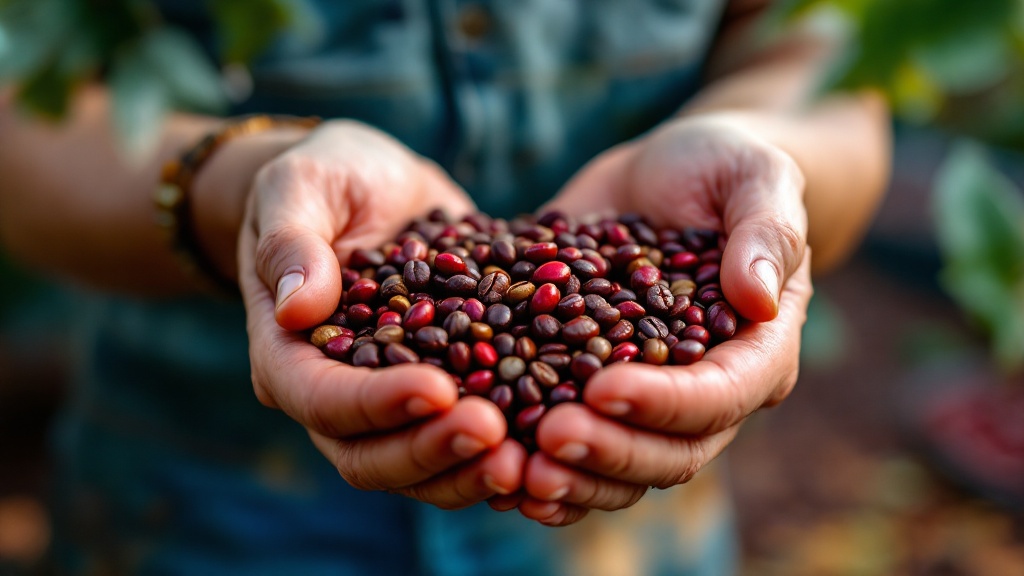
The journey from coffee cherry to the bean you grind is a crucial one, shaping the final flavor profile of your coffee. Three primary processing methods–washed, natural, and honey–each impart unique characteristics to the bean.
“The processing method is the silent artist behind every coffee bean, shaping its flavor story from cherry to cup.”
– James Hoffmann, World Barista Champion and Coffee Expert
The washed, or wet, process involves removing the fruit pulp and fermenting the beans before drying. This meticulous method results in a cleaner, brighter cup, often highlighting the bean’s inherent acidity and origin characteristics. Natural processing, also known as the dry method, involves drying the cherries whole, allowing the fruit’s sugars to infuse into the bean. This leads to a sweeter, fruitier cup with a heavier body.
Finally, the honey process offers a middle ground. Some of the fruit mucilage is left on the bean during drying, resulting in a cup that balances the sweetness of the natural process with the cleanness of the washed process. Experimenting with different processing methods is a great way to expand your coffee horizons.
Mucilage Retention in Honey Processing
The honey process, a nuanced approach within coffee processing, centers on the manipulation of mucilage-the sticky layer of pectin and sugars adhering to the parchment layer of the coffee bean after depulping. Unlike the washed process, which completely removes the mucilage through fermentation, and the natural process, which retains all the mucilage throughout drying, the honey process involves varying degrees of mucilage retention. This retention significantly impacts the final cup profile, influencing sweetness, body, and acidity levels. The specific level of mucilage retention is often categorized using descriptive terms like “red,” “yellow,” or “white” honey, depending on the amount of mucilage left after depulping and the resulting drying characteristics. “Red honey” processes retain a substantial portion of the mucilage, leading to a longer drying time and a more intensely fruity and sweet cup profile, similar to, but generally less intense than, a fully natural process.
- Mucilage retention time directly correlates with the final cup’s sweetness and body; longer retention equals a sweeter, fuller-bodied coffee.
- The “red,” “yellow,” and “white” honey classifications are not standardized and vary between farms and regions.
- Drying time for honey process coffees is significantly longer than washed coffees, often taking several weeks.
- The level of mucilage retained influences the coffee’s fermentation profile, impacting its aroma and flavor complexity.
- Some honey process variations involve partial mucilage removal via washing before drying, creating unique flavor profiles.
- The pectin in the mucilage contributes to the coffee’s mouthfeel and texture.
Roasting: Unveiling the Bean’s Hidden Potential
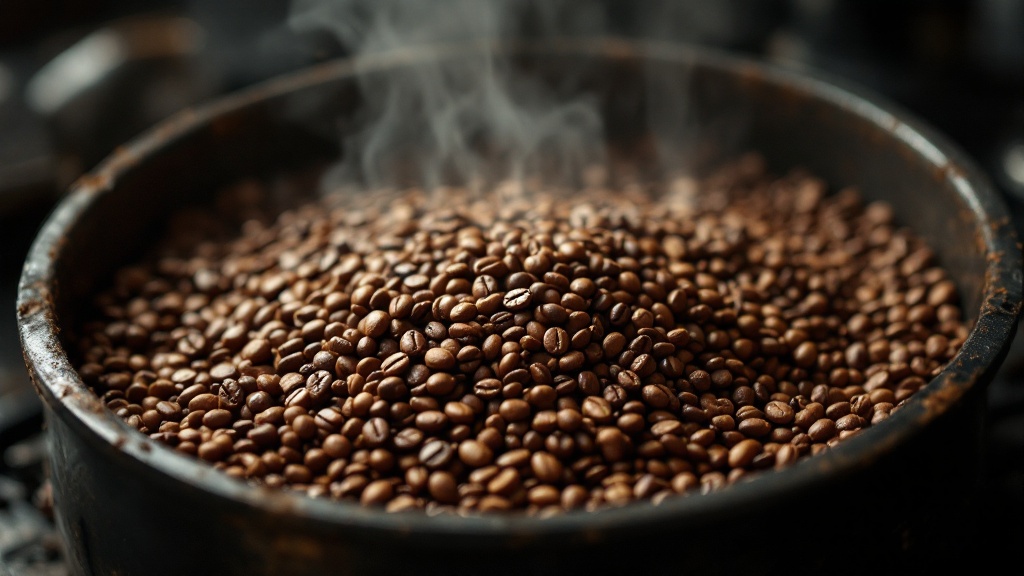
Roasting is where the magic truly happens. The application of heat transforms green coffee beans into the aromatic, flavorful gems we know and love. From light to dark, the roast level dramatically influences the final cup.
Light roasts preserve the bean’s origin characteristics, showcasing its acidity and nuanced flavors. Medium roasts offer a balanced profile, with a touch of sweetness and a well-rounded body. Dark roasts, on the other hand, develop bold, smoky flavors, often with notes of chocolate or even burnt caramel. The acidity is lower in dark roasts, resulting in a smoother, more intense cup.
Choosing the right roast level depends on your brewing method and taste preferences. Lighter roasts are often preferred for pour-over methods, while darker roasts are popular for espresso and French press.
Roast Development & Maillard Reaction
The transformation of green coffee beans into roasted coffee is largely governed by the Maillard reaction, a complex series of chemical reactions between amino acids and reducing sugars. This reaction, initiated by the application of heat, is responsible for the development of the characteristic aroma and flavor compounds in roasted coffee. The process is highly temperature-dependent and involves numerous intermediate compounds before reaching the final flavorful molecules. The rate of heat transfer, crucial for consistent roasting, is influenced by factors such as bean size, density, and the roasting environment itself (e.g., drum roasters versus air roasters). Different roast levels are achieved by controlling the time and temperature profile throughout the roasting cycle.
- The Maillard reaction creates hundreds of volatile and non-volatile aroma compounds, contributing to the coffee’s unique flavor profile.
- Bean moisture content significantly impacts the Maillard reaction; drier beans roast faster, potentially leading to uneven development.
- Different roast levels (light, medium, dark) correspond to specific temperature ranges and reaction stages within the Maillard process.
- Pyrolysis, the breakdown of organic matter at high temperatures, also plays a role alongside the Maillard reaction in later stages of roasting.
- Acids in the bean are altered during roasting, impacting the final coffee’s acidity and body.
- Roasting equipment (e.g., fluid bed roasters) influences heat transfer and, consequently, the Maillard reaction’s progression.
Grinding and Brewing: The Final Steps to Coffee Perfection
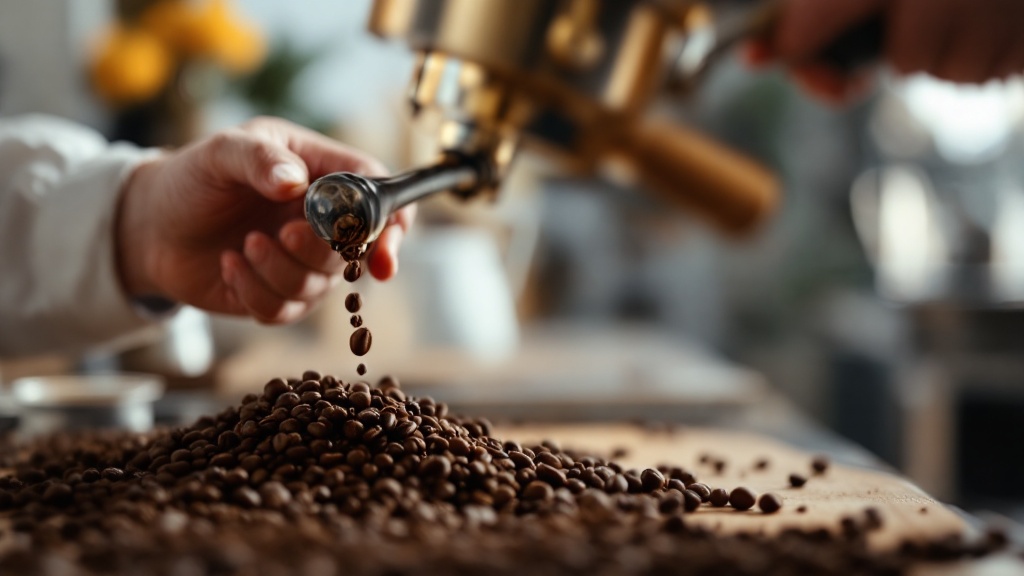
Freshly ground coffee is essential for a flavorful cup. Invest in a burr grinder to ensure consistent particle size, which is crucial for even extraction. Grind your beans just before brewing to maximize freshness.
The brewing method you choose also plays a significant role. Pour-over methods, like the Hario V60 or Chemex, allow for precise control over brewing variables. Espresso machines, while requiring more investment and practice, produce concentrated shots with a rich crema. The French press offers a full-bodied, immersive experience.
Regardless of your chosen method, aim for a coffee-to-water ratio of 1:16 (e.g., 20 grams of coffee to 320 grams of water) and use filtered water heated to 195-205°F (90-96°C). Experiment with different grind sizes and brew times to find the sweet spot for your preferred method and beans.
Burr Grinder Particle Size Distribution
Achieving optimal coffee extraction hinges critically on consistent particle size distribution from the burr grinder. Inconsistencies lead to uneven extraction, resulting in sourness from under-extracted fines and bitterness from over-extracted coarser particles. Burr grinders, unlike blade grinders, produce a more uniform distribution through their precisely machined burrs. The degree of uniformity is characterized by the grind size distribution, often expressed as a coefficient of variation (CV) or standard deviation. A lower CV indicates a narrower distribution, signifying better uniformity. High-end grinders often boast CVs below 10%, representing exceptional particle size consistency. Conversely, a poorly maintained or low-quality burr grinder might exhibit a CV exceeding 20%, leading to significant extraction inconsistencies.
- Grind size distribution directly affects brewing time; a finer grind increases surface area, resulting in faster extraction.
- The ideal CV (coefficient of variation) for espresso is typically lower than for pour-over, reflecting the need for extreme consistency.
- Burr grinder adjustment (e.g., stepless vs. stepped) influences the achievable particle size range and distribution.
- Regular burr grinder maintenance, including cleaning and burr alignment, is crucial for maintaining consistent particle size distribution.
- Different bean types may require different grind sizes and thus different CV targets for optimal extraction.
- Particle size analyzers are used to objectively measure and quantify grind size distribution for quality control.
Storing Your Beans: Preserving Freshness and Flavor
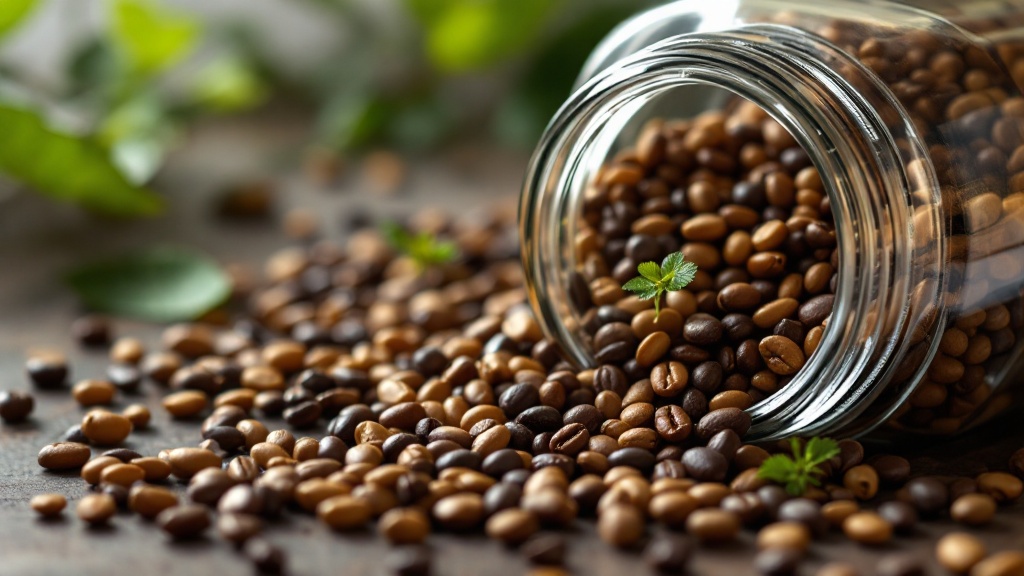
Once you’ve found your perfect beans, proper storage is key to maintaining their freshness. Store them in an airtight container, away from light, heat, and moisture. Avoid refrigerating or freezing your beans, as this can introduce moisture and negatively impact their flavor.
Buy smaller quantities of beans, ideally enough for 2-3 weeks, to ensure you’re always brewing with the freshest possible coffee. This will allow you to fully appreciate the nuances of each bean and avoid the disappointment of stale, flavorless coffee.
Oxygen Absorption Kinetics in Coffee
The deterioration of roasted coffee beans is primarily driven by oxidation, a process significantly influenced by oxygen absorption kinetics. The rate of oxygen uptake is not constant but follows a complex pattern dependent on several factors, including bean moisture content, roast level, and storage temperature. Immediately post-roasting, beans exhibit a high rate of oxygen absorption due to the presence of highly reactive compounds formed during the roasting process. This initial phase is crucial, as a significant portion of flavor degradation can occur within the first few days.
- Oxygen absorption slows significantly after the initial rapid uptake, transitioning to a slower, more prolonged phase.
- Higher bean moisture content correlates with faster oxygen absorption and accelerated degradation.
- Darker roasts generally exhibit slower oxygen absorption rates compared to lighter roasts due to the Maillard reaction.
- Storage in airtight containers significantly reduces oxygen exposure and extends shelf life.
- The presence of antioxidants in coffee beans can help to mitigate oxidation, though their levels diminish over time.
- Packaging with oxygen absorbers further enhances the preservation of coffee bean quality by actively removing oxygen.
Beyond the Bean: Exploring the Wider World of Coffee

The world of coffee extends far beyond the bean itself. Delving into related topics like coffee farming, home roasting, latte art, and coffee chemistry can enrich your appreciation for this beloved beverage. Understanding the journey from farm to cup, the science behind roasting, or the artistry of latte art can add new dimensions to your coffee experience.
Consider supporting sustainable coffee practices by looking for certifications like Fair Trade, Rainforest Alliance, or Direct Trade. These certifications ensure that farmers are paid fairly and that environmentally responsible practices are followed. By making conscious choices, you can contribute to a more sustainable and equitable coffee industry.
Coffee Roast Kinetics
The Maillard reaction and caramelization are crucial chemical processes that occur during coffee roasting, significantly impacting the final cup’s flavor profile. The Maillard reaction, a complex series of chemical reactions between amino acids and reducing sugars, begins around 140°C (284°F) and contributes to the development of hundreds of volatile aromatic compounds responsible for the characteristic coffee aroma. Caramelization, the pyrolysis of sugars, starts at higher temperatures (around 160°C or 320°F) and contributes to the coffee’s sweetness and body. These reactions are highly temperature and time-dependent, exhibiting complex kinetics.
- Reaction rates are influenced by bean moisture content; drier beans roast faster.
- Agtron and color measurements are used to monitor roast progression and degree of roast.
- Beyond Maillard and caramelization, Strecker degradation contributes to flavor development, producing pyrazines.
- Pyrolysis of chlorogenic acids contributes to bitterness and astringency in the final brew.
- Different roast levels (light, medium, dark) are achieved by controlling time and temperature parameters.
- Precise temperature control is critical for achieving desired flavor profiles and avoiding off-flavors from burning.
Conclusion: Embark on Your Coffee Adventure
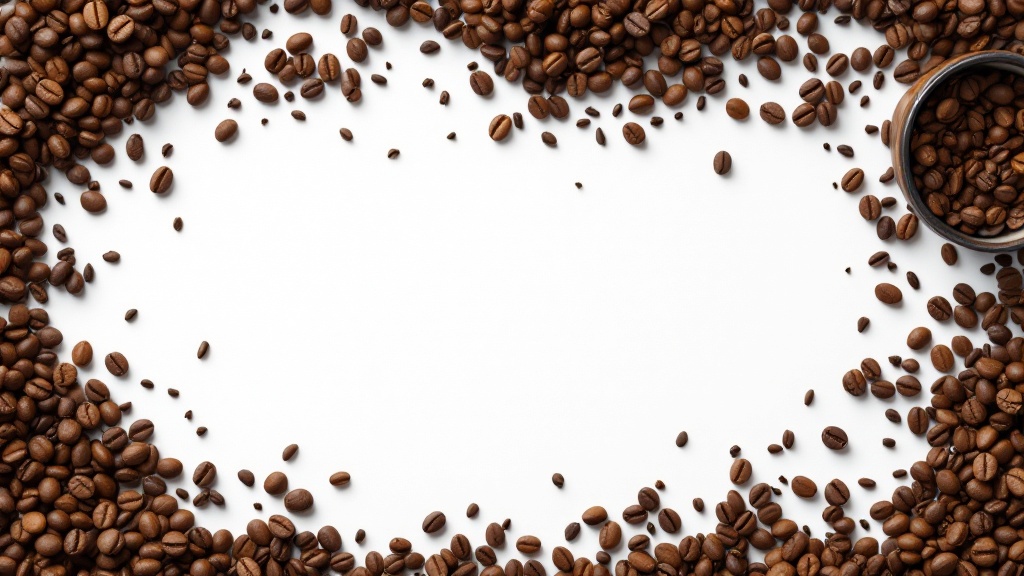
The world of coffee is vast and constantly evolving. From the humble bean to the perfect cup, there’s always something new to discover. Embrace the journey, experiment with different beans, brewing methods, and roast levels. Develop your palate, learn from experts, and most importantly, enjoy the process. Your perfect cup is waiting to be discovered.
Optimizing Extraction Yield
Achieving optimal extraction yield is paramount in producing a high-quality cup of coffee. Extraction, the process of dissolving desirable compounds from the coffee grounds into the brewed beverage, is influenced by several key variables. These include grind size, water temperature, brew ratio (coffee-to-water ratio), and brew time. A finer grind size increases surface area, leading to faster extraction, while a coarser grind results in slower extraction. Similarly, higher water temperatures accelerate extraction, potentially leading to over-extraction if not carefully managed. The brew ratio dictates the concentration of the final brew; a higher ratio generally results in a stronger, more concentrated cup. Finally, brew time directly impacts the amount of soluble compounds extracted; longer brew times can lead to over-extraction and bitterness, while shorter times may result in under-extraction and sourness.
- Total Dissolved Solids (TDS) measurement provides objective feedback on extraction efficiency, aiming for a range of 1.15-1.35%.
- Bloom (pre-infusion) is crucial; it saturates the grounds and ensures even extraction, preventing channeling.
- Agitation during brewing helps maximize contact between water and coffee grounds, promoting better extraction.
- Water quality significantly impacts extraction, with mineral content influencing taste and brew clarity; consider filtered water.
- Different brewing methods require adjustments to grind size, water temperature, and brew time to achieve optimal extraction.
| Key Aspect | Grind Size | Water Temp | Brew Time |
|---|---|---|---|
| Extraction Impact | Faster extraction (finer) | Accelerates extraction (higher) | Longer = over-extraction |
| Brew Ratio | N/A | N/A | Higher = stronger cup |
| TDS Range | 1.15-1.35% | 1.15-1.35% | 1.15-1.35% |

